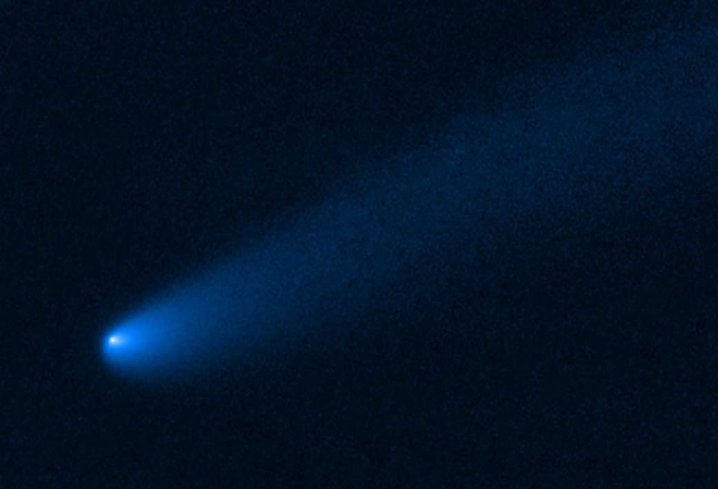
Both comets and asteroids are objects orbiting the sun, but comets are made of dust and ice while asteroids are made of rock, which means they have very different properties and appear differently in the sky. But there are rarely-spotted objects called centaurs which are a little bit of comet and a little bit of asteroid — hence their name after the mythical creatures which were half human and half horse.
The orbits of centaurs often cross the orbits of the outer planets, which makes them unstable, and they have water ice on their surfaces which leaves a comet-like trail, but their interior composition is more like an asteroid.
Recently, the Hubble Space Telescope snapped an image of an object called P/2019 LD2 which appears to be a centaur, with a comet-like tail that is formed when surface ice starts to vaporize, leaving a long tail of matter spread across the sky. Previous observations by the Spitzer Space Telescope showed its composition included carbon monoxide and carbon dioxide gases.
It’s a rare thing to be able to capture an image of such a wanderer, located between Jupiter and Neptune. It is currently nestled among a group of asteroids in the orbit of Jupiter called the Trojans, which is the first time a comet-like object has been seen there.
“Only Hubble could detect active comet-like features this far away at such high detail, and the images clearly show these features, such as a roughly 400,000-mile-long broad tail and high-resolution features near the nucleus due to a coma and jets,” said lead Hubble researcher Bryce Bolin of Caltech in a statement.
“The visitor had to have come into the orbit of Jupiter at just the right trajectory to have this kind of configuration that gives it the appearance of sharing its orbit with the planet. We’re investigating how it was captured by Jupiter and landed among the Trojans. But we think it could be related to the fact that it had a somewhat close encounter with Jupiter.”
The object probably won’t stay among the Trojans for long though, as simulations show it will come close to Jupiter in around two years’ time which will push it onto a new path.
“The cool thing is that you’re actually catching Jupiter flinging this object around and changing its orbital behavior and bringing it into the inner system,” said team member Carey Lisse of the Johns Hopkins University Applied Physics Laboratory (APL). “Jupiter controls what’s going on with comets once they get into the inner system by altering their orbits.”



